Sunflowers - Vincent van Gogh
Sunflowers are one of Vincent van Gogh's most famous works. In the late 1880s, Van Gogh began to produce a series of dazzling sunflowers. Sunflowers become one of his favorite themes, one of which he often works with.
The Paris Sunflowers;
The theme of Sunflowers is the subject of two series of still life pictures. Van Gogh lived in Paris in February 1886 for two years with his brother Theo. During this period, the colors in the his palette began to revive, the use of colors and brush domination was now an indicator of his original identity. In this period, he generally deals with flower subjects in the vase. In the summer of 1887 he painted the first of sunflower paintings. In this first series, mature cut sunflowers are depicted on a background.
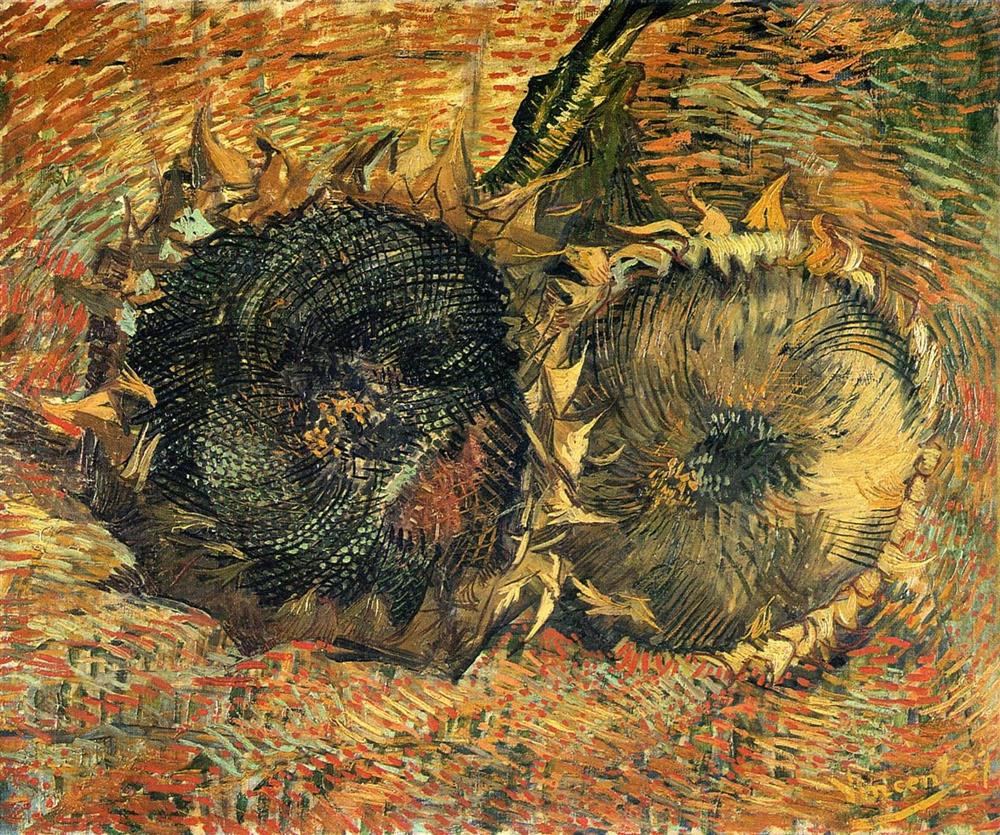
Sunflowers, 1887, Oil on canvas, Museum of Fine Arts Bern, Bern, Switzerland.
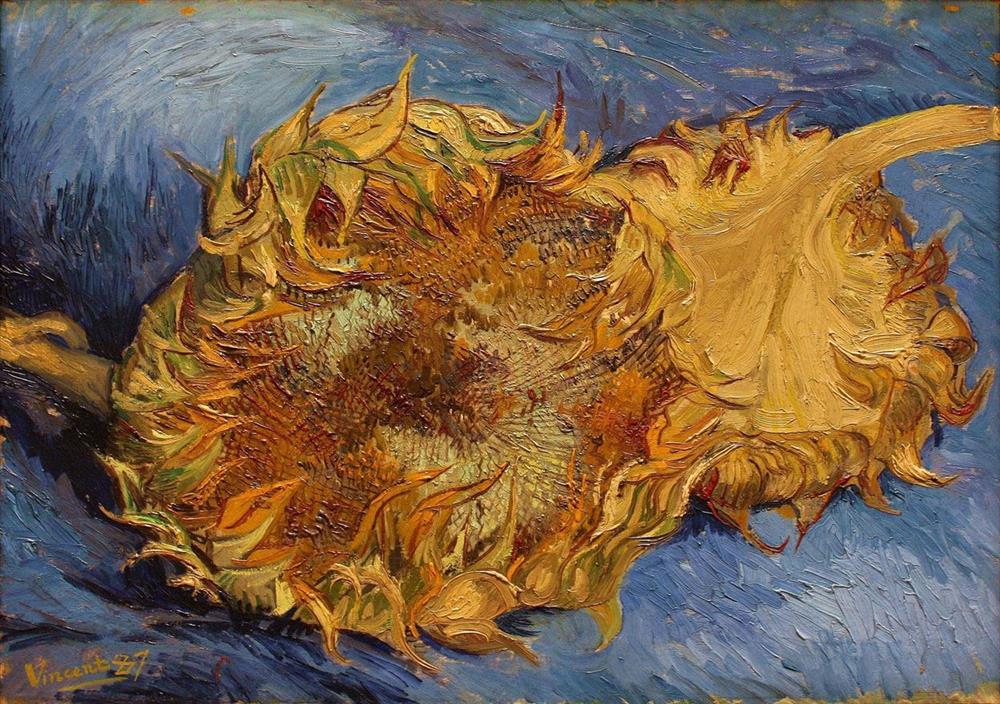
Sunflowers, 1887, Oil on canvas, 43.2 x 61 cm, The Metropolitan Museum of Art, New York, US.
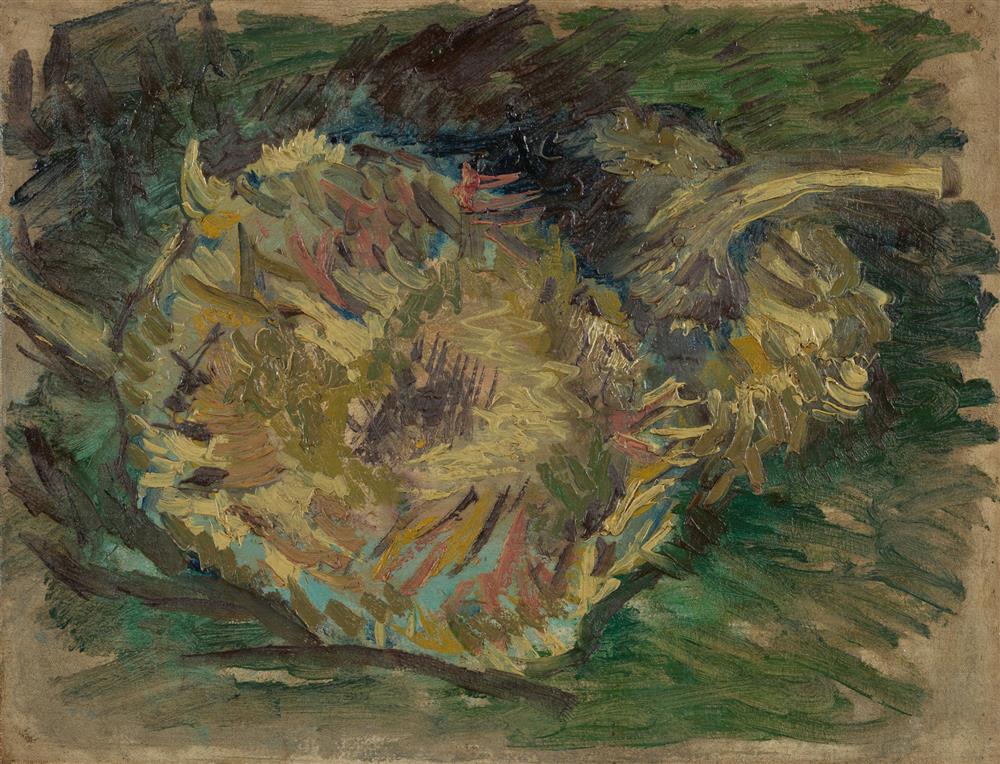
Sunflowers, 1887, Oil on canvas, 21.2 x 27.1 cm, Van Gogh Museum, Amsterdam, The Netherlands.
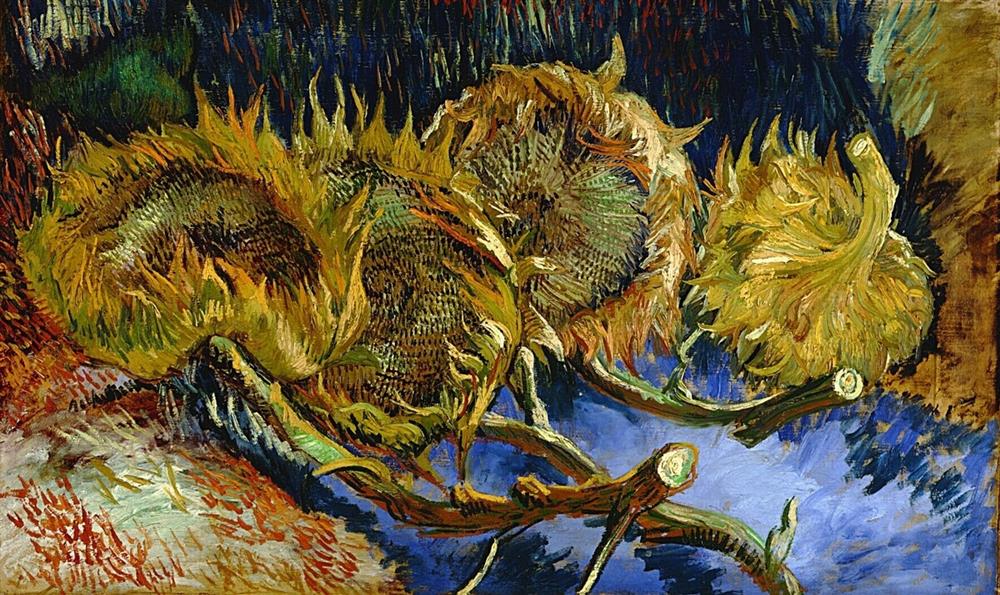
Four Cut Sunflowers, 1887, Oil on canvas, 60 x 100 cm, Kröller-Müller Museum, Otterlo, The Netherlands.
The Arles Sunflowers;
Van Gogh moved to Arles in southern France on February 20, 1888, after two years in Paris. By renting the famous Yellow House, he invited Paul Gauguin, his painter friend, to Arles because he was considering working together. Theo, who runs a gallery in Paris and sells both his brother's and Gauguin's works, tries to fulfill this request. Gauguin's visit was clear and Van Gogh prepared the Yellow House for him. Waiting for his friend with enthusiasm is reflected in the paintings he made in this period. He paints a lot of pictures adorning the walls of the house and the room of Gauguin. He began the series of sunflowers that he started in August in Paris, and matures the theme, revealing his masterpieces on the subject.
While in Arles, he wrote a letter to his brother Theo about Sunflowers:
“I’m painting with the gusto of a Marseillais eating bouillabaisse, which won’t surprise you when it’s a question of painting large Sunflowers.
I have 3 canvases on the go, 1) 3 large flowers in a green vase, light background (no. 15 canvas), 2) 3 flowers, one flower that’s gone to seed and lost its petals and a bud on a royal blue background (no. 25 canvas), 3) twelve flowers and buds in a yellow vase (no. 30 canvas). So the last one is light on light, and will be the best, I hope. I’ll probably not stop there. In the hope of living in a studio of our own with Gauguin, I’d like to do a decoration for the studio. Nothing but large Sunflowers.
Next door to your shop, in the restaurant, as you know, there’s such a beautiful decoration of flowers there; I still remember the big sunflower in the window. Well, if I carry out this plan there’ll be a dozen or so panels. The whole thing will therefore be a symphony in blue and yellow. I work on it all these mornings, from sunrise. Because the flowers wilt quickly and it’s a matter of doing the whole thing in one go.”
Arles, End of August 1888
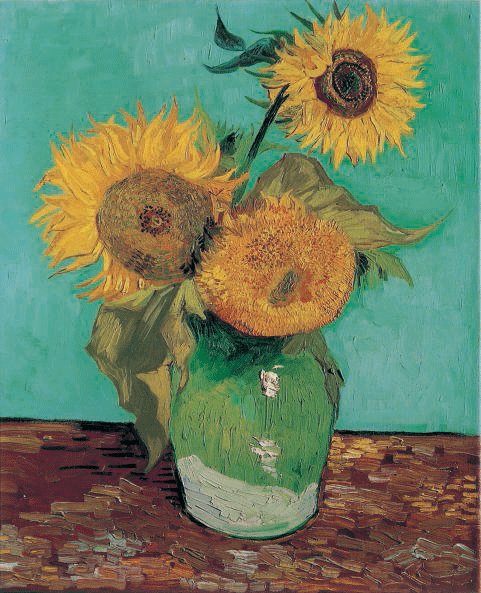
Sunflowers, 1888, Oil on canvas, 73 x 58 cm, Private collection.
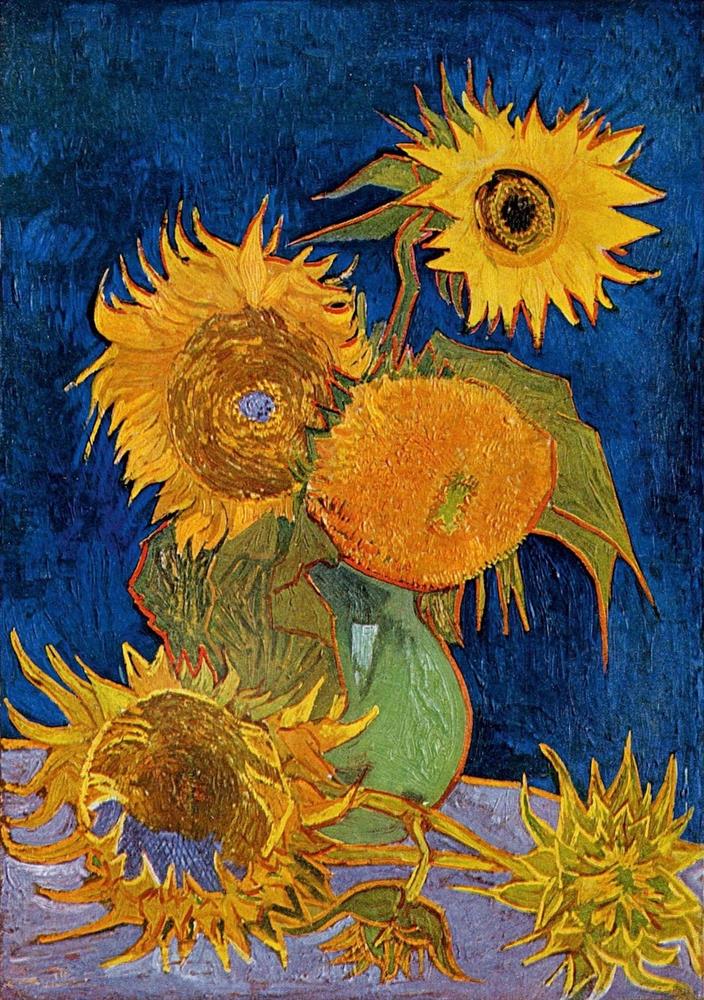
Sunflowers, 1888, Oil on canvas, 98 x 69 cm.
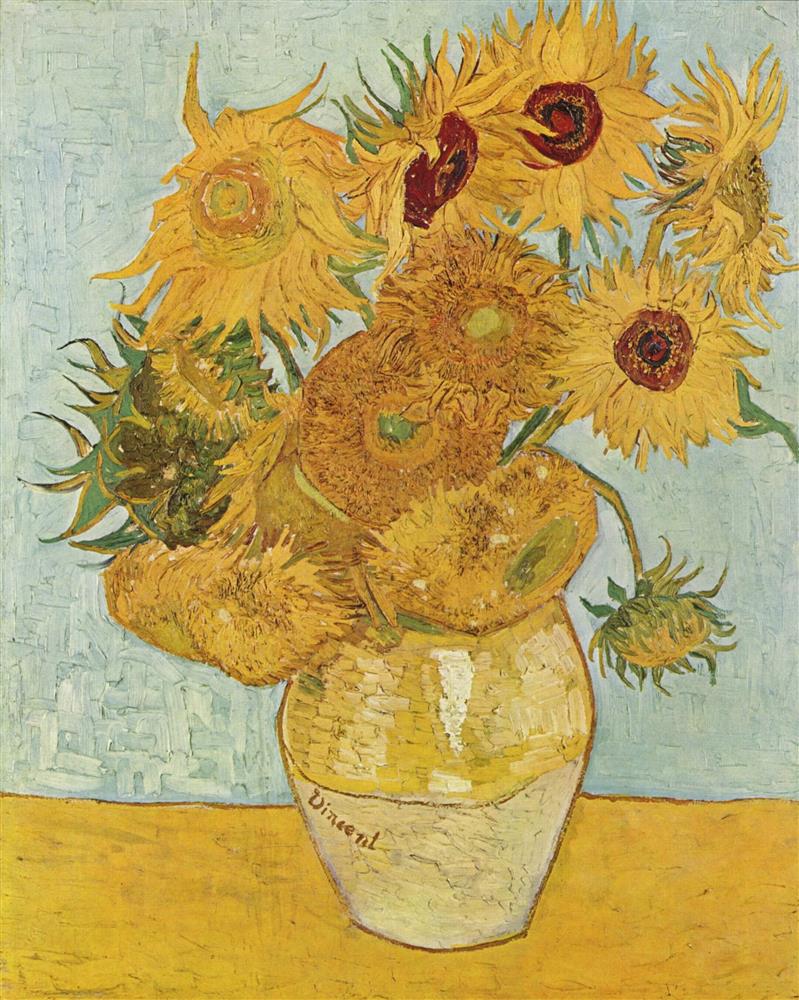
Sunflowers, 1888, Oil on canvas, 92 x 73 cm, Neue Pinakothek, Munich, Germany.
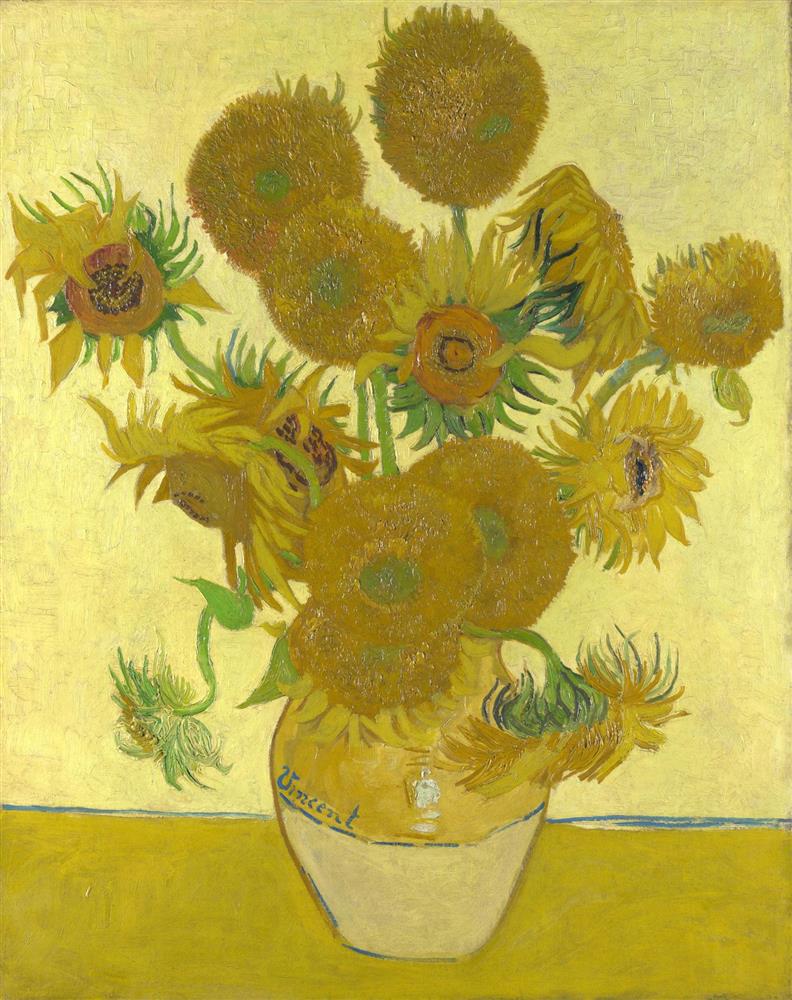
Sunflowers, 1888, Oil on canvas, 92.1 x 73 cm, The National Gallery, London, UK.

Sunflowers, 1888, Oil on canvas, 100.5 x 76.5 cm, Sompo Japan Museum of Art, Tokyo, Japan.
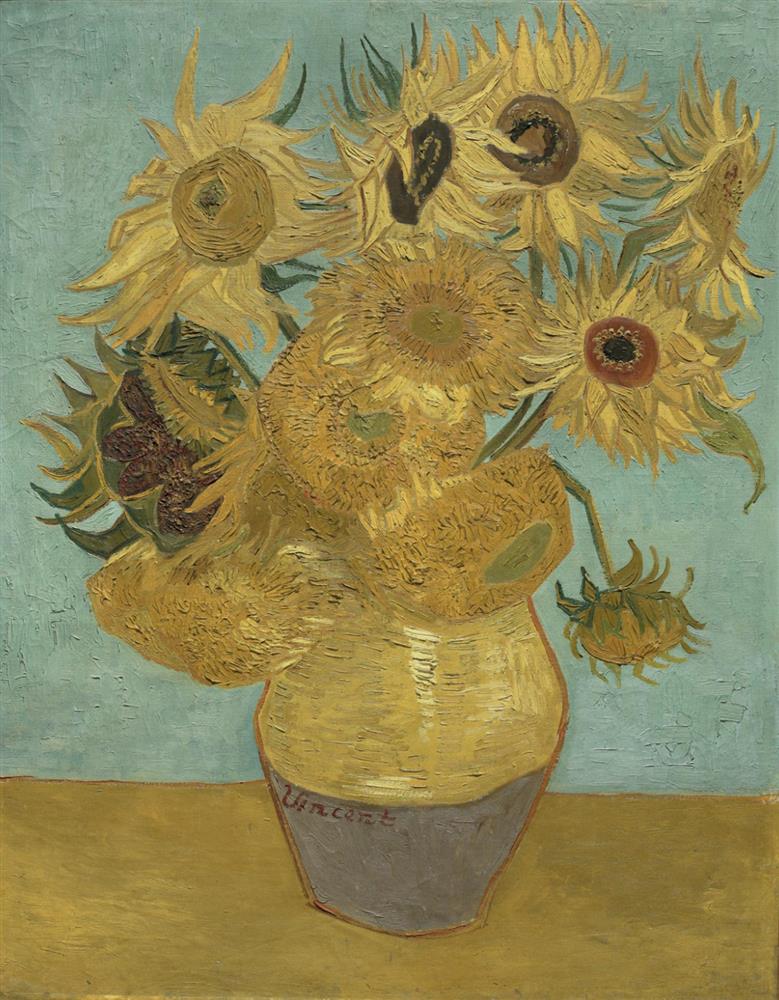
Sunflowers, 1889, Oil on canvas, 92.4 x 71.1 cm, Philadelphia Museum of Art, Philadelphia, US.
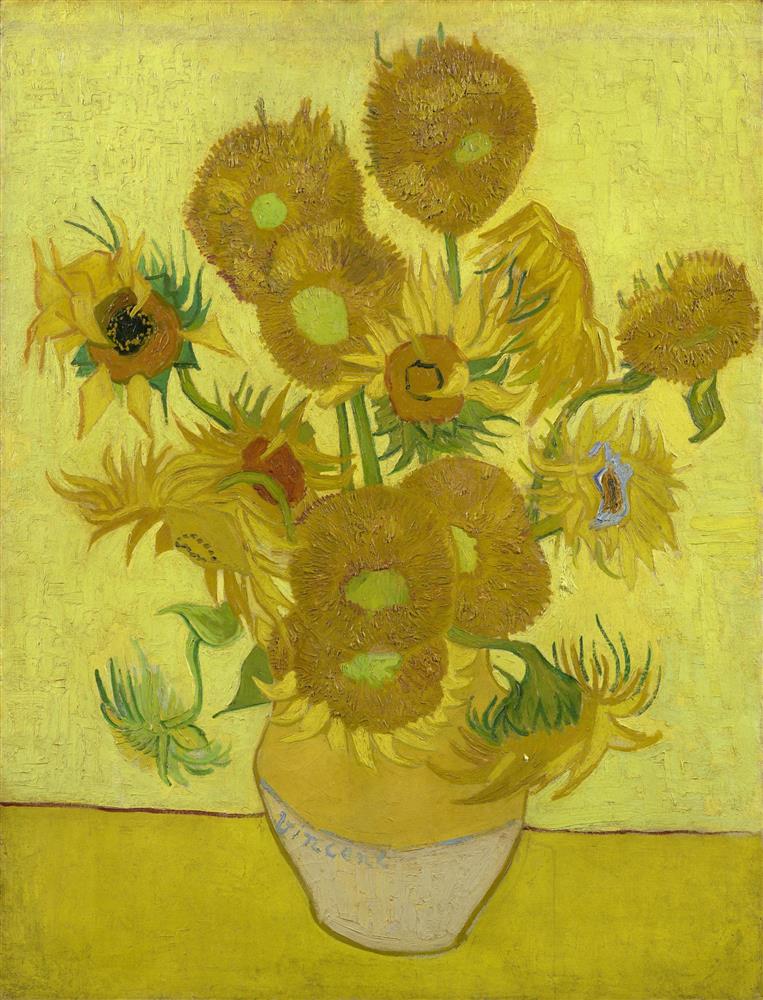
Sunflowers, 1889, Oil on canvas, 95 x 73 cm, Van Gogh Museum, Amsterdam, The Netherlands.
“Van Gogh Painting Sunflowers”
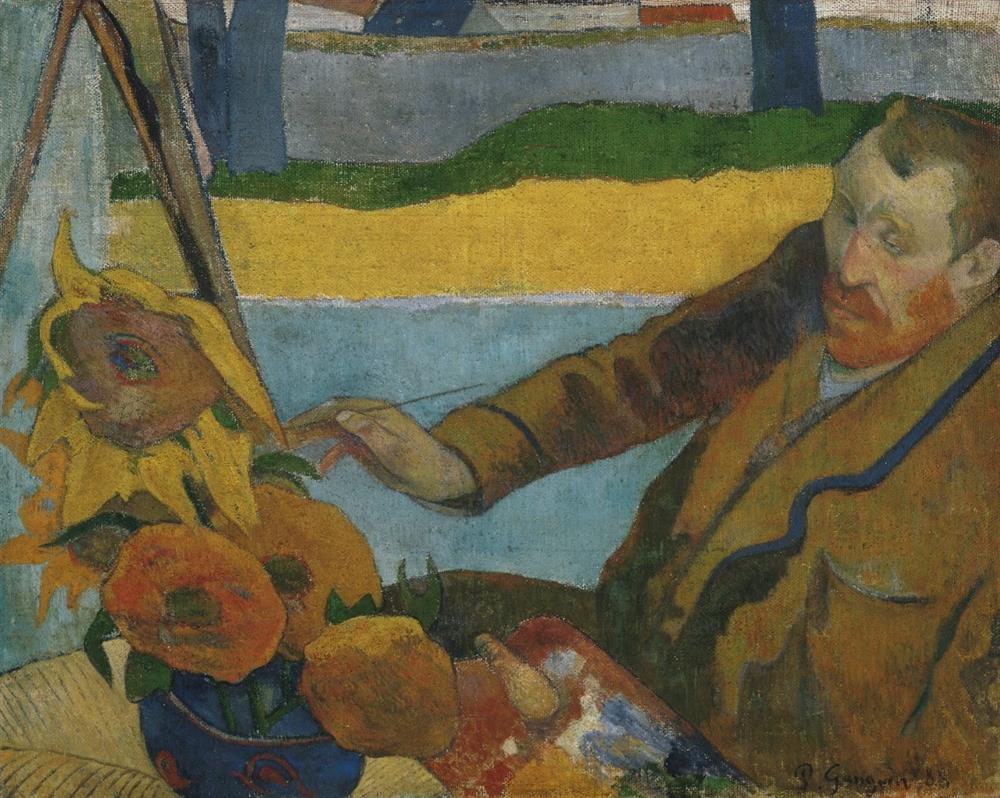
Paul Gauguin, Van Gogh Painting Sunflowers, 1888, Oil on canvas, 73 x 92 cm, Van Gogh Museum, Amsterdam, The Netherlands.
When Gauguin settled in Arles, Van Gogh's dreams came true, and Sunflowers had influenced Gauguin. After they started working together, their relationship was soon broken. Paul Gauguin and his about two-month relationship ended when Van Gogh cut his left ear as a result of depression. Gauguin left Arles. Gauguin had just completed his work on “Van Gogh Painting Sunflowers.”
Van Gogh transferred of sunflowers to canvas with full sharpness. Thick thick colors, with the complexity of the leaves gushing out and the luminance of the background, he carried the Sunflowers to a different world than the other flowers in the vase. Sunflowers in vase was a very good example of the artist's imagination.
Bibliography;
Spence, D., (2015). Büyük Ressamlar Van Gogh, Üçüncü Baskı, Beta Yayınları, İstanbul.
Çev: Kür, P., (2006). Theo'ya Mektuplar, Dördüncü Baskı, Yapı Kredi Yayınları, İstanbul.
Walther, I.F., (2005). Van Gogh, Birinci Basım, Taschen/Remzi Kitabevi, İstanbul.
Dickins, R., (2013). Ünlü Resimler, İkinci Baskı, Sıfıraltı Yayıncılık, Ankara.
Walther, I.F., (2005). Gauguin, Birinci Basım, Taschen/Remzi Kitabevi, İstanbul.












